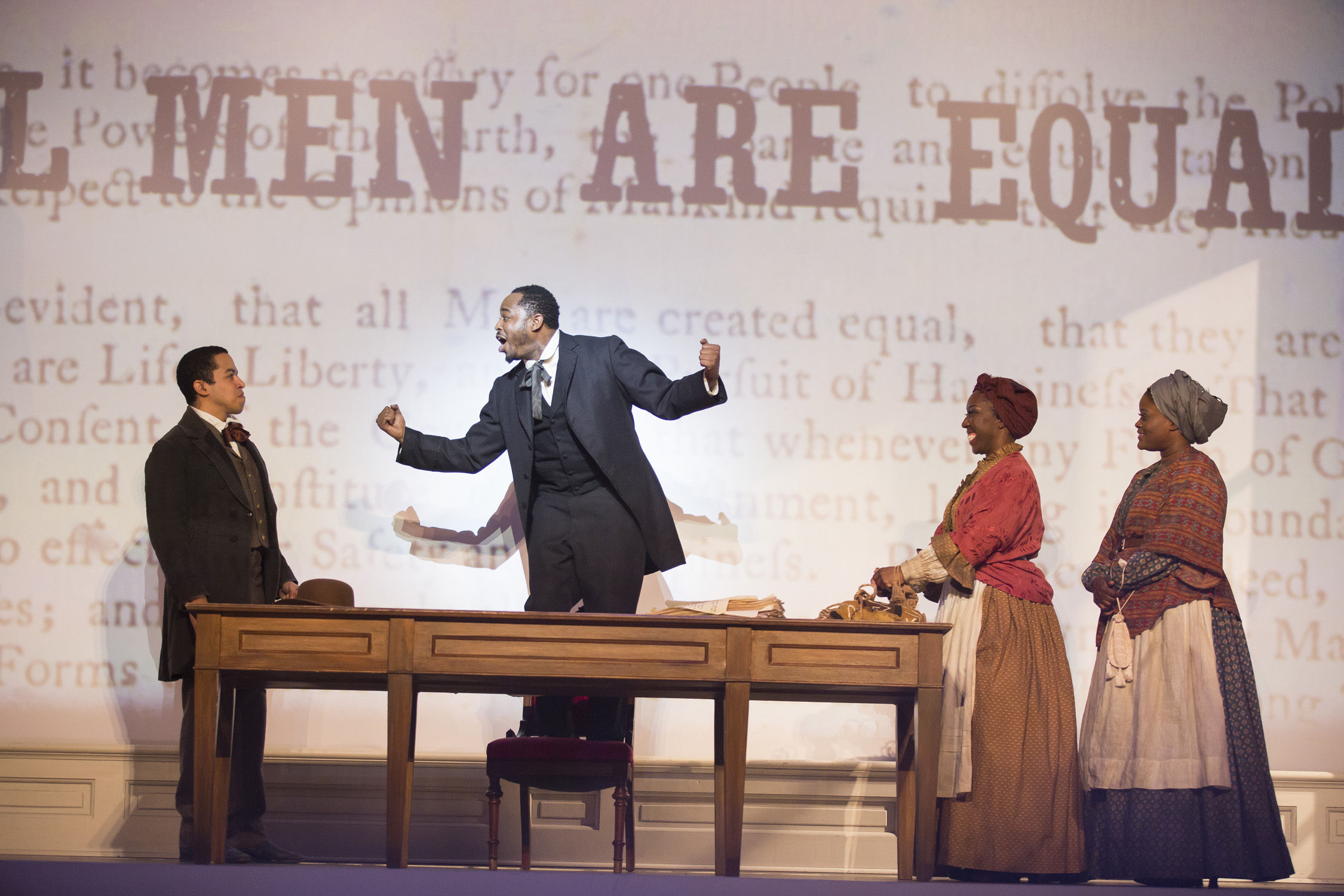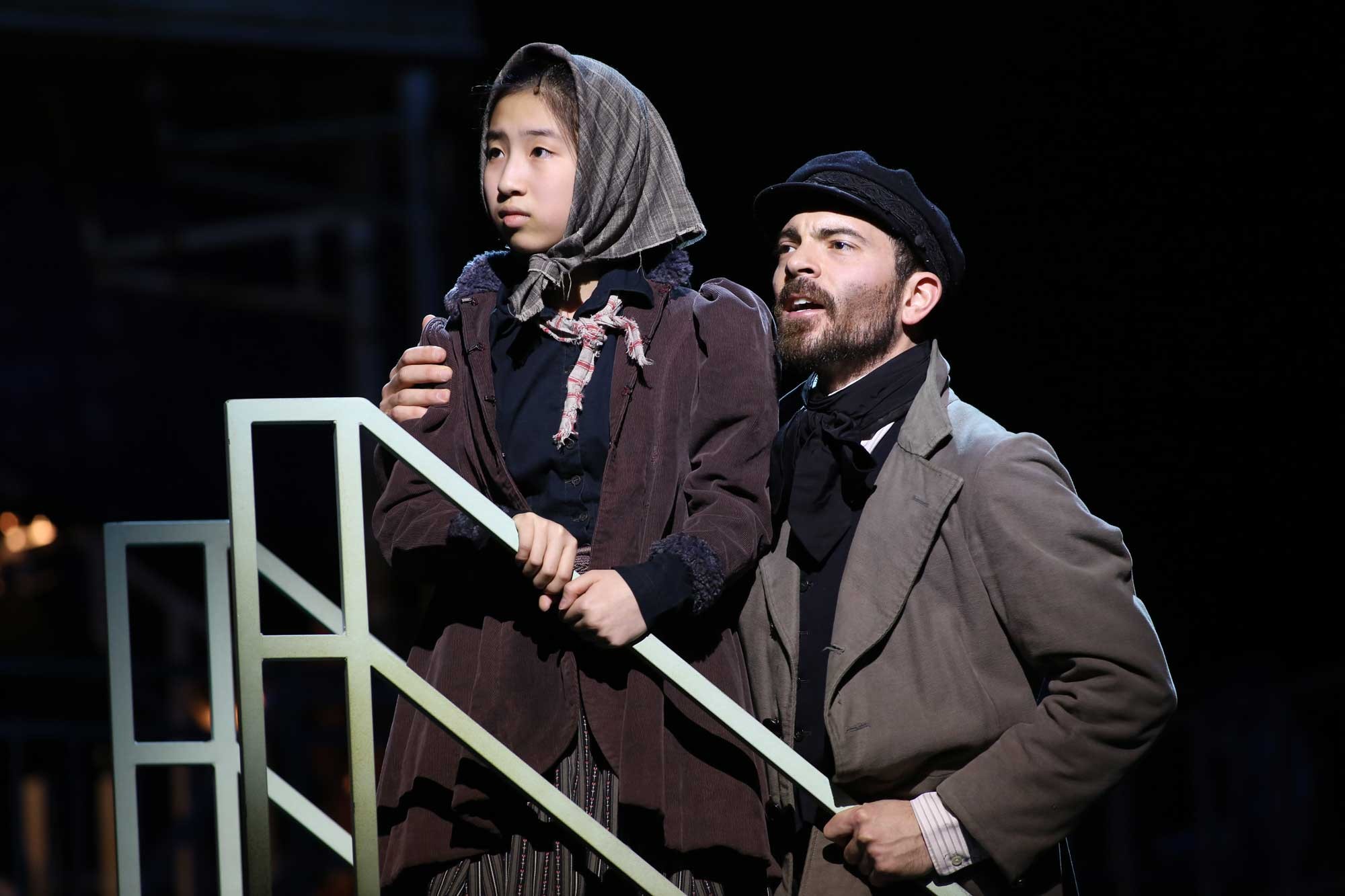
Seven Ways Historic Ford’s Theatre Brings Abraham Lincoln’s Legacy to Life
When I began working for Ford’s Theatre Society in 2008, I was struck by the profound resonances our stage productions had simply because they were presented in “Lincoln’s house.” With the Presidential Box visible just above our actors, I often find myself thinking about the connections between what’s on our stage and the history that happened here.
Perhaps you have seen reenactors at Williamsburg or on Civil War battlefields. Maybe you are familiar with costumed interpreters and park rangers telling the story of events at our national historic sites, but only at Ford’s Theatre can you watch history come to life through fully staged theatre productions.
On February 12, 1968, Ford’s Theatre reopened as a working playhouse after the stage had been dark for more than 100 years. Fifty years later, I’ve been reflecting on why Ford’s remains a unique fixture in the cultural landscape.
We partner with the National Park Service.
Since 1968, Ford’s Theatre has been operated through a public-private partnership between the National Park Service and its non-profit partner, Ford’s Theatre Society. The Society produces all of the theatrical programming for the site, presenting four mainstage shows a year, as well as a one-act play and downtown D.C. walking tour that explore the events of the Lincoln assassination. Meanwhile, our partners at the National Park Service actively maintain the physical historic properties (Theatre and the Petersen House) and lead ranger programs for our more than 650,000 annual visitors. Together, the Society and NPS provide historical interpretation on site.

We are a working theatre.
When the National Park Service was preparing to reopen Ford’s as a National Historic Site, Frankie Childers Hewitt, a lobbyist who had worked with both John F. Kennedy and Lyndon Johnson, approached Secretary of the Interior Stewart Udall to discuss whether live theatre would be presented in the restored theatre. Hewitt feared that the absence of live theatre would turn the building into a monument to John Wilkes Booth’s crime rather than a testament to Lincoln’s legacy and his appreciation for the arts.
So, Hewitt built a partnership with the National Park Service to help found Ford’s Theatre Society. You can read more about this history in our blog, Photos from the Archives: The Revival of Theatre at Ford’s Theatre.

Our theatrical performances bring history to life on stage.
As the site of Lincoln’s assassination, we place special emphasis on plays that look at President Lincoln and events related to his life and presidency. I started working at Ford’s right before we opened The Heavens Are Hung In Black, a play we commissioned to honor Lincoln’s 200th birthday and the reopening of the theatre following restoration work. Watching David Selby portray Lincoln—at one moment delighting in the antics of his son Tad, and in the next weighed down by the war—connected me with Lincoln the man more than any book I had read.
We also look for plays or musicals that highlight specific eras in American history, like Jefferson’s Garden (Revolutionary America) and Ragtime (early 20th-century America).

We use theatre to explore the Lincoln legacy.
Lincoln’s legacy is grounded in his personal and political magnanimity during the darkest days of the Civil War, when his inspiring oratory and generous vision imagined a nation once again unified, binding up the wounds of war and rekindling hope for a truly United States. At Ford’s Theatre, this legacy lives on through programming that reflects core American ideals, such as integrity, equality and empathy.

We explore the American experience through diverse perspectives.
Millions of voices, each telling their own stories—inspiring or heartbreaking, new or old—make up the American experience. By considering the issues of the past and our own modern times through a “Lincoln lens,” we aim to examine the American experience by exploring the country as it was, as it is today, and as it is hoped for in the future.

Our productions introduce young audiences to theatre, often for the first time.
If you have attended a performance at Ford’s Theatre, especially during the spring, you’ve likely seen the hundreds of students on our campus. I am always thrilled to walk into the theatre and see it full of students from across the country—many who are experiencing live theatre for the first time. We also partner with D.C. Public Schools to provide free tickets to student matinees.
Our unique, historic space creates a theatrical experience like no other.
Sitting in the theatre, with the President’s Box draped in the American flag, there is no escaping the history that happened here. In 1776, as the founding fathers make compromises around slavery in the Declaration of Independence, I was struck by the ramifications of that history 150 years later. And in Fly, about the Tuskegee Airmen, I thought about the promises, filled and unfulfilled, of the Emancipation Proclamation.
All of these elements make Ford’s a vibrant stage for engaging and entertaining theatrical encounters and an immersive environment that celebrates the life and values of Abraham Lincoln and his evolving legacy. By keeping the theatre alive, we assert that Ford’s is not just the site of Lincoln’s assassination but a place where all audiences can share in the joy and inspiration that Lincoln himself found in the performing arts.
Liza Lorenz is Director of Communications and Digital Strategy. Follow her on Twitter @Liza_Lorenz.

